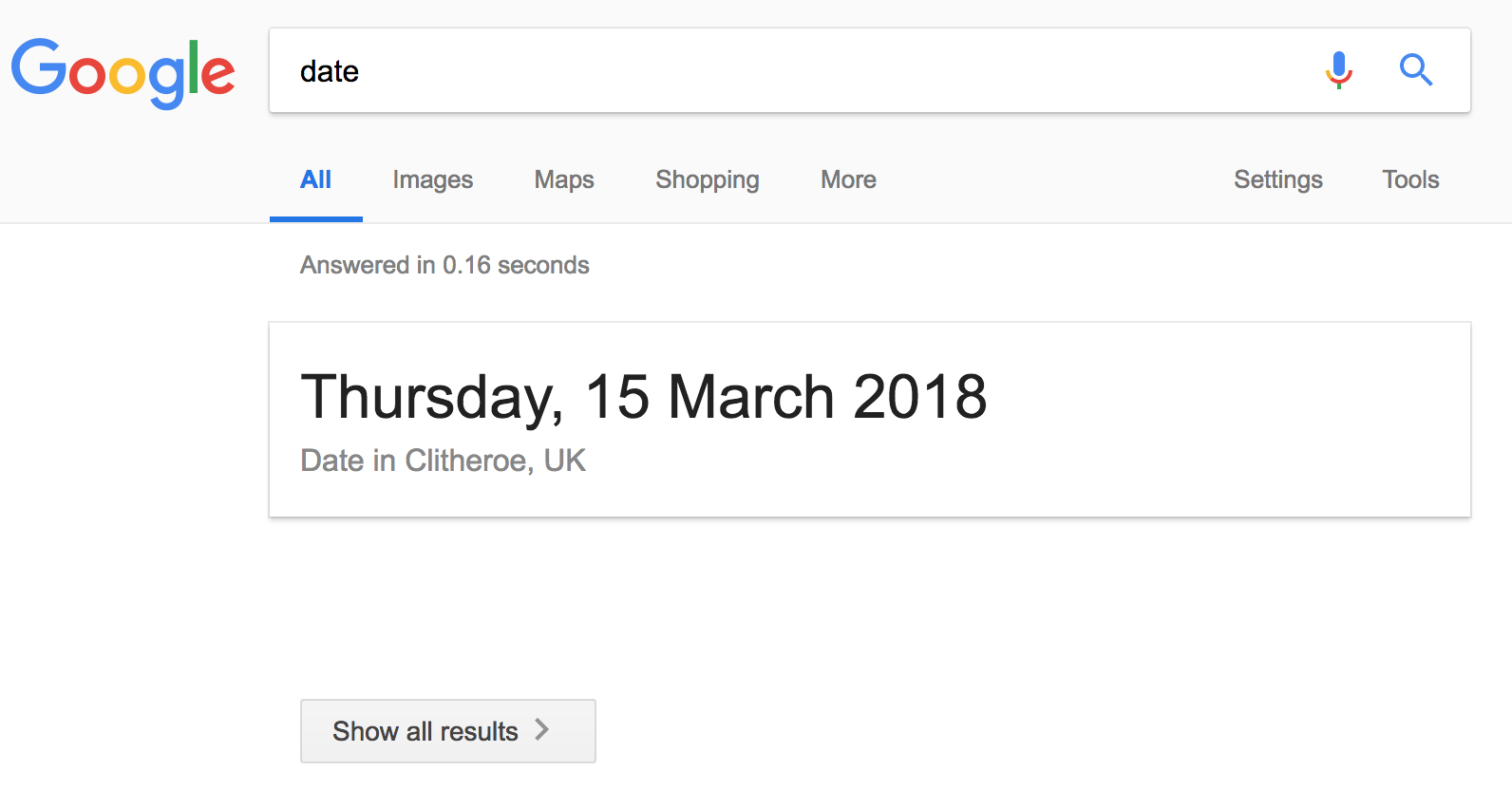Have you seen the screenshots going round of Google showing zero search returns for certain search queries? In case you missed them, here's another one:

Is This a Problem?
Maybe. A while ago, we spoke about how Google was diminishing the number of organic spots and this could be the next evolution of that problem.
First, the standard 10 organic spots was often reduced to eight and there was an increase in the number of paid ads.
Then another hit for inbound marketers, who rely on SEO to get their content seen, was the reduction of prime SERP real estate offered to organic results with the promotion of rich snippets, answer boxes and Google’s own answers dominating the top of the page. Non-snippet holding pages are bumped down below the fold and then have to fight over the hurdle of not being #1 and being a scroll away.
That said, if you can gain and hold a rich snippet or answer box, you can harvest plenty of click throughs.
The wider point about Google showing zero answers apart from their own for queries such as ‘Date’, however, is this: Where will they draw the line?
A user entering ‘Date’ may well be wanting to check what day of the year it is, but they may just as likely be looking for pictures of the fruit, or they may be searching for a site to find that special someone. But Google has taken the liberty of deciding this off very little contextual insight.

It should worry inbound marketers if Google wants to keep heading towards being an information engine rather than a search engine.
Add this to the growing list of moves to keep users on Google - alongside AMP, shopping, answer panes, rich snippets and whatever else - and discourage people from clicking through to our own sites.
The Potential Future-User Journey and the Impact on Inbound Marketers
Imagine this. The Google-only SERP test proves popular and it’s rolled out to wider, longer search queries and they start to include rich snippets or their own answer and no other info unless you click to do so.
The answer box/rich snippet doesn’t satisfy the user’s query so they do choose to see search results. One click post search query.
Organic spot #1 is often not the rich snippet holder, so they try that result. Two clicks.
But it’s not right for them either and they head back to the SERP. Three clicks.
Your result is #2 and they take a look. Four clicks now and patience is getting short. Your blog or webpage needs to give them what they’re looking for right from the first beat. Otherwise, I reckon people will try a new search query.
And, as an aside, this makes for pretty poor UX from Google's point of view even if #2 is the right result. Not only have they provided duff information on the first and second try, they've hidden the range of options behind another click too.
That's Why We Should Carry on Inbounding
Will this change go any further? Ultimately, it will come down to whether this tactic provides a good UX for Google’s users. If the stats show that people like it, they’ll roll it out for longer search terms… so what do we do then?
It points to even higher importance being placed on gaining #1 ranking spots and rich snippets. Target them and hold them and you’re making a no lose bet. If the Google SERP stays as it is, you’re winning the battle for traffic anyway. But if they keep heading down the route of hiding organic results then you’re best placed to do well there too.
Either way, it's always interesting to see Google's changes because it's so insightful for what internet users want. But have they got this one right? Join in the chat below.
And if you're thinking about adopting inbound marketing or are well on your way, make sure you're using the right automation tool. Take a copy of our free comparison...
Real Growth. Real Impact.
'Should I use HubSpot?' 32 fundamental reasons why you should
Avidly named HubSpot EMEA and APAC Partner of the Year
21 cost-effective marketing campaigns you can create right now
Breeze: Everything you need to know about HubSpot's powerful AI
INBOUND 24 learnings and updates
Avidly Activates: The origin story
See why enterprises choose Avidly
Let’s build your HubSpot success story
Compelling final call to action - with accompanying link to Contact page








